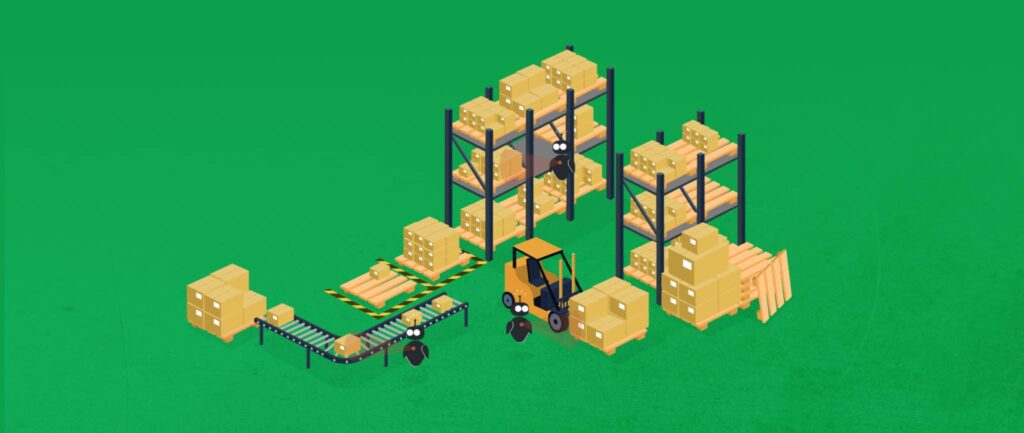Here at ShipMonk, we live, breathe, and eat order fulfillment (okay, maybe not the eating part, but you get the idea). Despite order fulfillment being an integral aspect of eCommerce, very few people are entirely familiar with exactly what it is and how it works… and we don’t blame them! After all, it’s not exactly a common topic for the everyday shopper.
In this article, we’ll be exposing the fulfillment industry — and no, gnomes and elves are not responsible for getting your orders out to you on time. From the what to the why to the how, we’ll be taking you through the ins and outs. Soon enough, you’ll become a fulfillment expert yourself!
What Is Order Fulfillment & Why Is It Important?
In the simplest of terms, eCommerce order fulfillment is the process from order checkout to order delivery. The second you complete a purchase online, the store you purchased from is now tasked with materializing your order right to your doorstep. There can be many twists and turns along the way, which is why having the right fulfillment strategy is non-negotiable for any successful business.
Generally, order fulfillment encompasses:
- Receiving inventory
- Inventory storage and forecasting
- Picking and packing (also known as order processing)
- Kitting and bundling products (if applicable)
- Shipping orders
- Handling returns
Order fulfillment is so important that, without it, eCommerce wouldn’t exist — after all, customers purchase products with the expectation of receiving what they’ve ordered. Fulfillment is the second step in a two-step equation, the “getting” after the “buying.”
How Does Order Fulfillment Work?
We’re glad you asked! It all starts with a button. That button can be called “Check Out,” “Buy Now,” “Place Order,” or any variation thereof. Regardless of its name, the meaning is always the same — to complete a purchase and, subsequently, get that purchase out into the real world. Once that fateful button is pressed, the gears of fulfillment are set into motion.
First, for fulfillment to work, there needs to be a way to track the details of a purchase, such as customer and product information. This can be done manually, or, better yet, through an integration between the shopping cart and fulfillment software being used. An integration is essentially a sync between two different systems, which, in the tech world, just means that everyone (and every system!) is on the same page.
Once the order details have been received, it’s time to pick and pack. For larger operations, picking can be slightly tricky. For instance, say a business 1) sells t-shirts and 2) has multiple SKUs, or unique t-shirt designs. In this case, each SKU needs to be stored separately so that there are no mispicks or inaccurate orders.
After picking comes packing, something we’ve all done at one point or another! But, instead of hurriedly packing presents on Christmas Eve, the order fulfillment process is a little more streamlined. The picked order items are dropped off at a packing station, where a packer will then select the appropriate packaging, which can range from boxes and mailers to bubble wrap and crinkle paper. The packing stage is also a great time to hone in on branding, such as through custom tape and promotional inserts.
Once an order has been securely packed, a shipping label is printed and attached to the exterior of the packaging. It’s now time to ship!
Although shipping is usually handled by shipping carriers (like UPS and FedEx), it’s still a part of order fulfillment. That’s because whoever is fulfilling the orders is responsible for negotiating shipping rates, coordinating shipments, and transporting orders to carriers.
Even after an order is safely delivered to its new home, order fulfillment is far from over. In fact, it plays a huge role in the post-purchase experience — returns, exchanges, mispicks, and shipping problems would all fall under the umbrella of order fulfillment.
What Are the Different Options?
For eCommerce business owners, there are three main ways to get customers’ orders picked, packed, and shipped.
In-House Fulfillment
In-house fulfillment, as you can imagine, is handling order fulfillment right from home. Or, alternatively, from a rented warehouse space. Point is, there is no outsourcing — the fulfillment process is handled internally every step of the way.
Dropshipping
Dropshipping refers to a slightly different way of “doing” eCommerce. It’s best to explain this one with an example.
Let’s suppose that Janice sells backpacks. She makes some of them herself and buys others from wholesalers. Regardless of how she acquires her inventory, she technically owns all of it. She’s also the one responsible for shipping products out (or finding a 3PL who will help her).
Janice has a friend, Kelly. Kelly is also interested in selling backpacks and saw that an unnamed retailer is selling cute backpacks for cheap. So, instead of purchasing and owning inventory, Kelly posts the retailer’s listings on her website. Once a customer makes a purchase, she then places that same order with said retailer, who is the one responsible for holding and shipping products on her behalf.
Unlike Janice, Kelly never sees or interacts with her inventory — she’s more like the “middleman” of a purchase.
Outsourced Fulfillment
Ah, ShipMonk’s area of expertise! Outsourced fulfillment is order fulfillment handled externally. It’s everything we just talked about, except a third-party company (aka 3PL) is handling it all.
It’s likely that, as an online shopper, you’ve purchased something online that was fulfilled by a different company than the one you purchased from. You probably didn’t even notice it because outsourcing fulfillment is supposed to be as seamless as possible — which includes following company branding to a T.
… And that’s (pretty much) everything you need to know about order fulfillment! Although no gnomes or elves are involved in the process of fulfilling your orders, the software and people that are able to make all of it happen are magical in their own right. Whether you’re an online shopper, a business owner, or both, we hope we’ve helped you see the value of (great) order fulfillment!
Have any questions? Don’t be shy! We love fulfillment and we’re here to help.
P.S. Want to become a pro on all things fulfillment and outsourcing? Then check out our eBook, “A Quick Guide to Outsourcing Fulfillment”! It’s a 5-star read.





